
Point Values of Chess Pieces Beginner's Guide EnthuZiastic
There are 6 unique chess pieces. They are: King Rook Bishop Queen Knight Pawn This page will cover where the chess pieces should start the game, how they move, how their moves are notated, and how good they are relative to the other chess pieces. The King The king is the piece with a cross at the top.
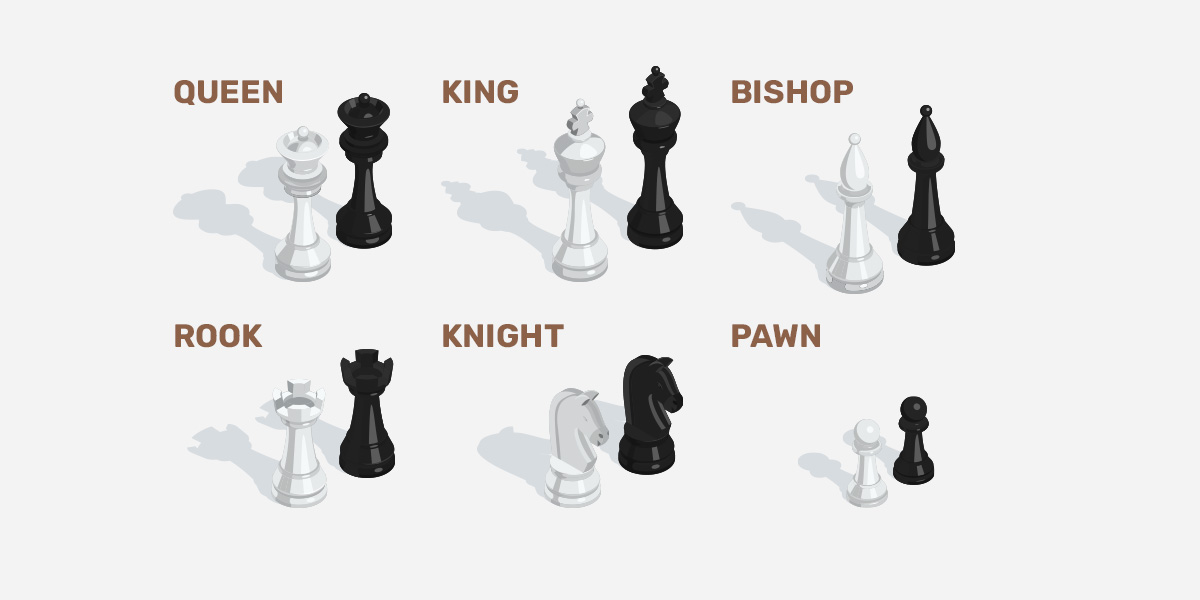
How to Start Playing Chess The Ultimate Beginner’s Guide
In chess, a relative value (or point value) is a standard value conventionally assigned to each piece. Piece valuations have no role in the rules of chess but are useful as an aid to assessing a position. The best known system assigns 1 point to a pawn, 3 points to a knight or bishop, 5 points to a rook and 9 points to a queen.

How do Chess pieces capture? Relative point value of each piece Lesson 3 YouTube
Exchange Tests Exchanging pieces can be tricky! Equal exchanges, like trading a pawn for a pawn or a queen for a queen, are ok when it comes to piece values—but what about a queen for two rooks? Well, a queen is worth nine points, and two rooks are worth ten points! In some cases a queen is better than two rooks, but these situations are rare.
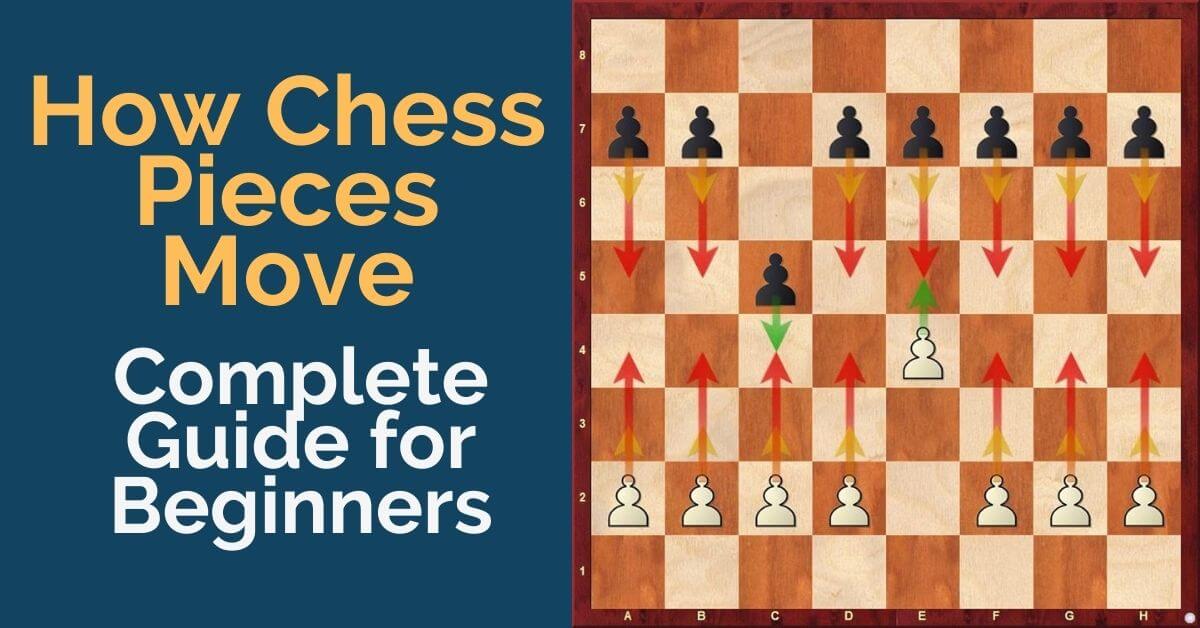
How Chess Pieces Move The Complete Chess Pieces Guide for Beginners TheChessWorld
Individual pieces: Pawn - 1 point Knight - 3 points Bishop - 3 points Rook - 5 points Queen - 9 points Piece combinations: Rook and Knight - 7.5 points Rook and Bishop - 8 points Pair of Rooks - 10 points Three minor pieces - 10 points Rook and two minor pieces - 11 points N.B.

The Different Chess Pieces Value With Chart Chess Delta
Here is a table showing the point values typically assigned to each chess piece in standard chess: Note that while these point values are commonly used as a guide to help players evaluate the relative strength of the pieces on the board, they are not set in stone and can vary depending on the specific position and game situation.

Point Values of Chess Pieces Beginner's Guide EnthuZiastic
The point value of chess pieces isn't just arbitrary numbers. They provide a guideline for making strategic decisions during the game, guiding you on when to make that risky sacrifice or when to hold your position. Always remember, the game of chess is a delicate balance between power and strategy.

Beginner to Chess Master 2 The Relative Value of Chess Pieces YouTube
From all the pieces, the king is the most important piece in chess! It doesn't have any point because if it's captured, the whole game is over. The white king can be found on e1, while the black king can be found on e8. Movement. A king can only move 1 step in any direction, that's horizontally and diagonally.

Point Values of Chess Pieces Beginner's Guide EnthuZiastic
Pawn How It Moves: Pawns move forward one square, except on their first move out of their rank (row) when they may move forward one OR two squares, but they can only capture diagonally. (White arrow points to legal move. Black arrows point to legal capture.)
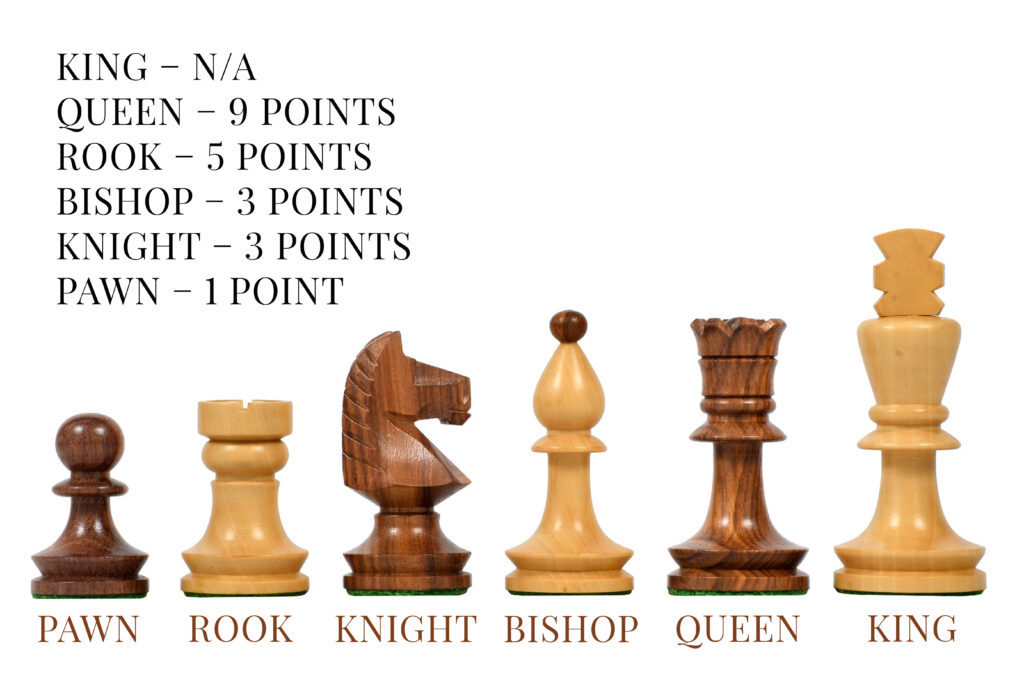
How to Set Up a Chessboard Step by Step Chessbazaar's Guide
Every piece on the board has an inherit value. A point system relative to the strength of that piece. It is essential for Chess players to know the relative value of the chess pieces in order to judge a trade of pieces. Below are the most commonly used values. Chess Piece Values Piece Value Pawn […]
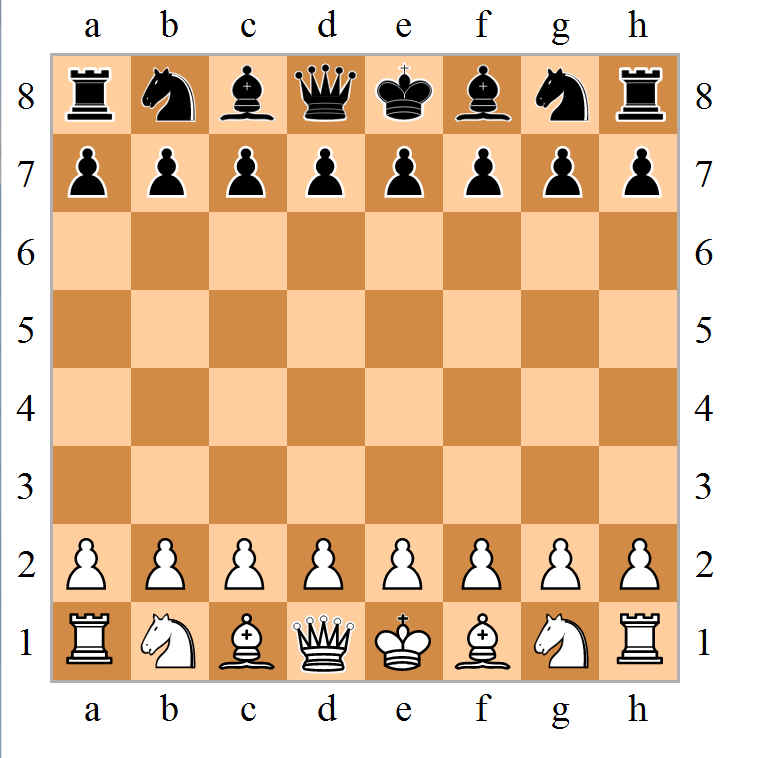
Chess Board Details (Positions, Coordinates) Chess Tips & Tricks
The values of the pieces are more important in determining who has the greatest amount of firepower on the board at any given moment. In general, it is almost always good to have a material advantage, because it means you have a bigger and more powerful army than your opponent. Even a single pawn can be enough of a material advantage to win the.
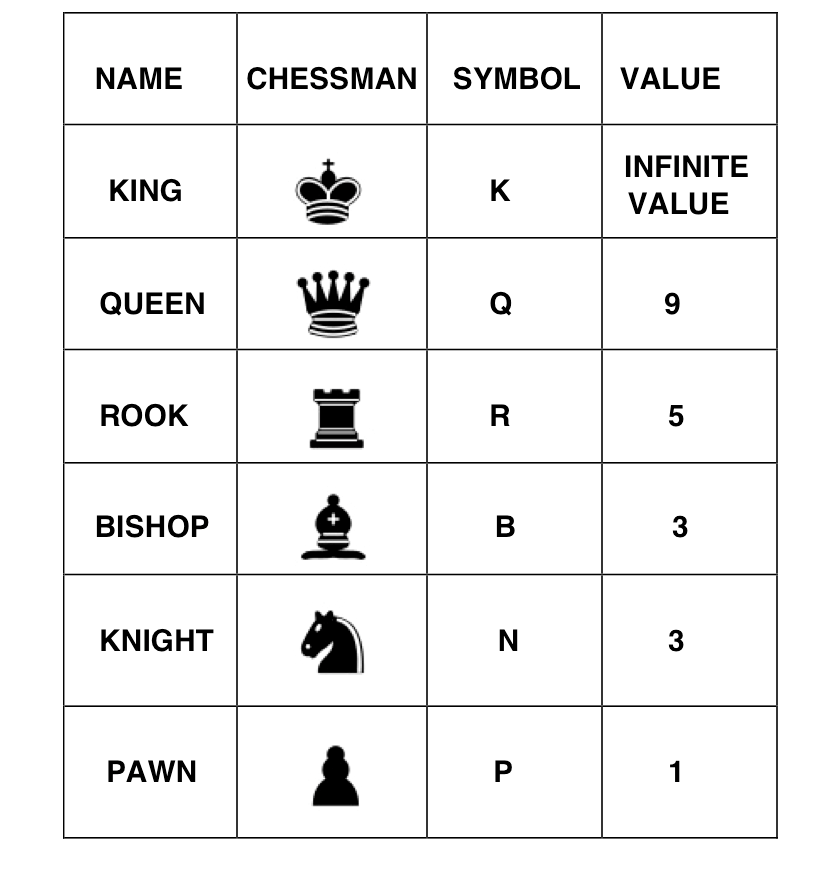
Is queen worth 9 points?
Here are the point values of chess pieces: According to this point system, a pawn is considered the weakest piece in chess with only 1 point. After that comes the knight and bishop with 3 points. The next piece is a rook with 5 points. It is considered the second most powerful piece in chess. The queen is worth 9 points, the highest.
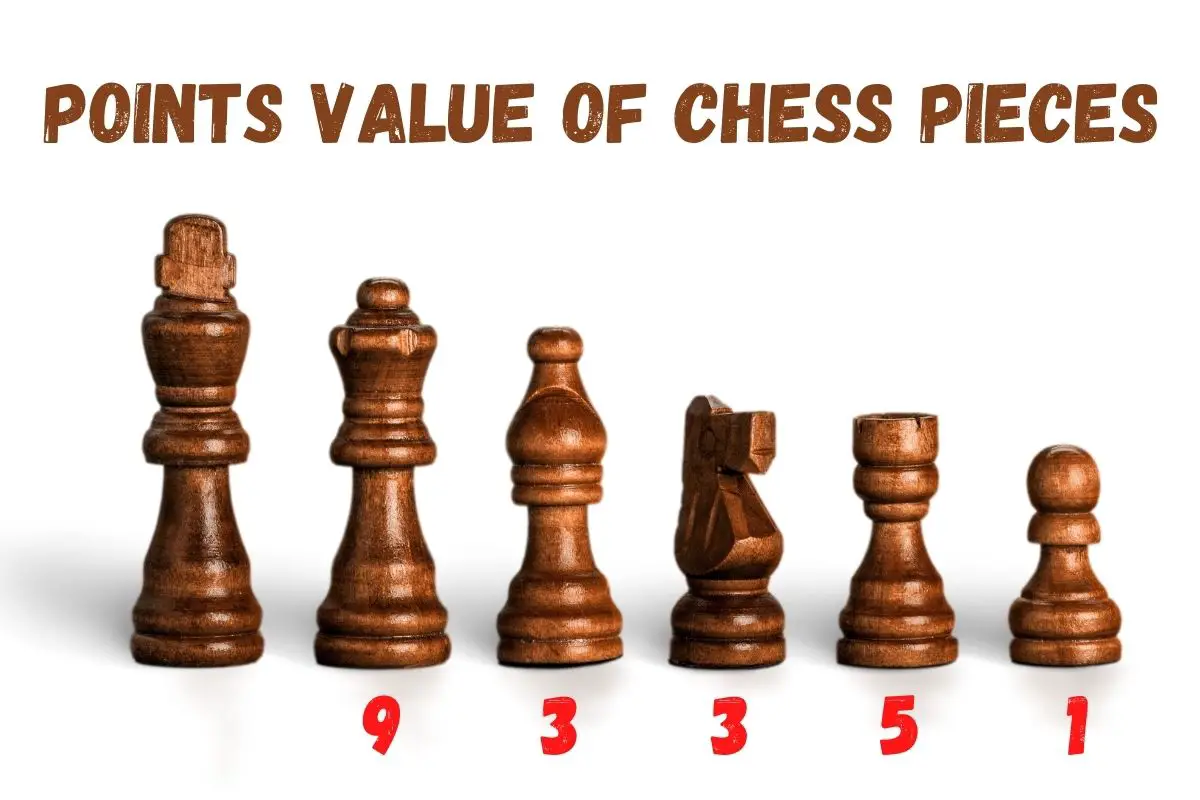
The Point Value Of Each Chess Piece What It Means Chess Questions
The chess pieces are what you move on a chessboard when playing a game of chess. There are six different types of chess pieces. Each side starts with 16 pieces: eight pawns, two bishops, two knights, two rooks, one queen, and one king. Let's meet them! How The Chess Pieces Move King - Moves one square in any direction.

Names Of Chess Pieces and their moves ChessEasy
Chess pieces do have point values. These values are used to determine the relative strength of each piece in the game. Understanding the point values of the pieces is crucial for evaluating positions, making strategic decisions, and assessing the overall balance of power on the chessboard. Here are the point values assigned to each chess piece: 1.
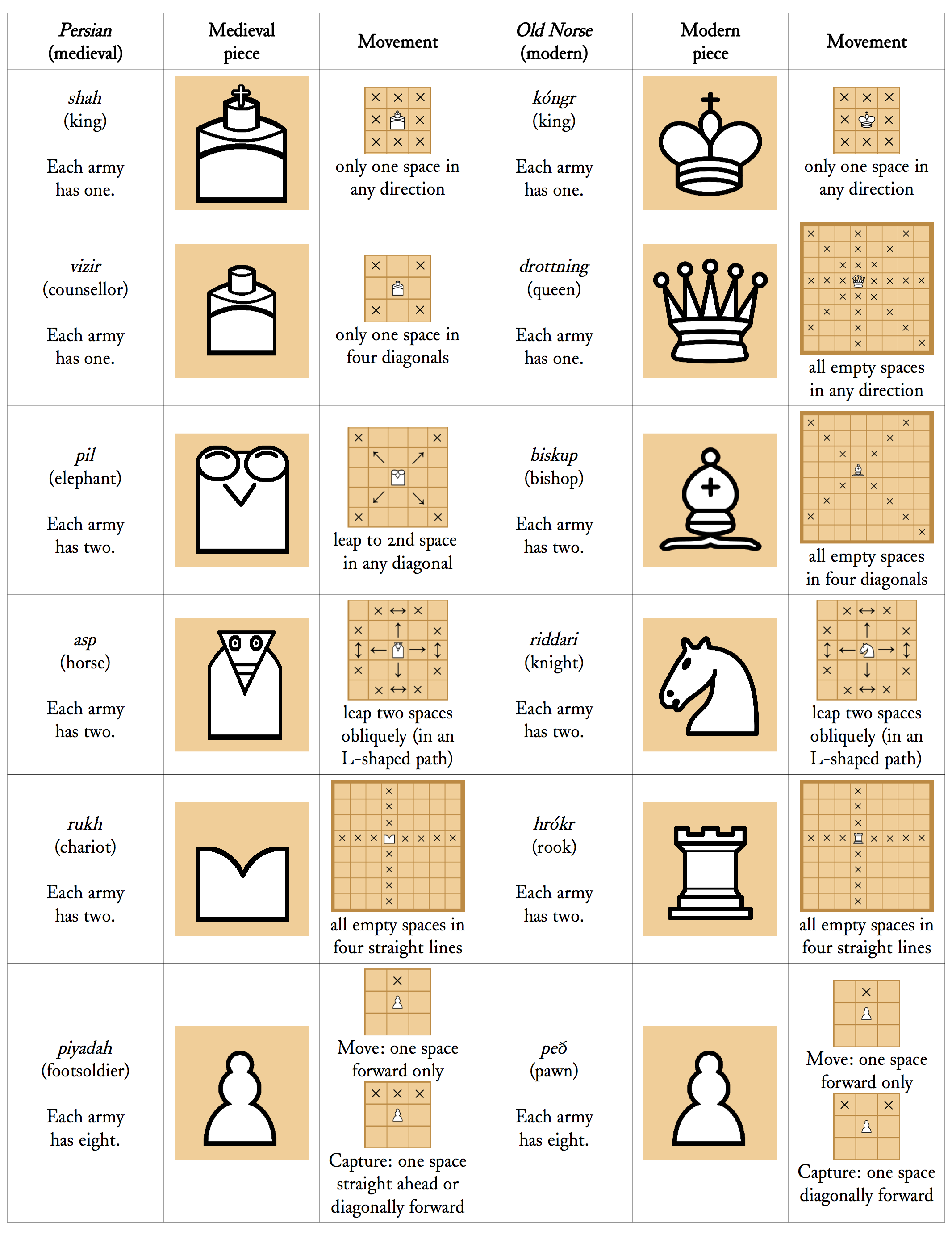
How To Play Chess For Dummies How to Play Chess for Beginners (with Downloadable Rule Sheet)
Chess Piece Point Values. King - n/a. Queen - 9 points. Rook - 5 Points. Bishop - 3 Points. Knight - 3 Points. Pawn - 1 Point. The value of each chess piece in points is generally accepted as 9 points for a queen and 5 for the Rooks, then 3 points each for the Bishops and Knights and each pawn is worth a single point - The King is.
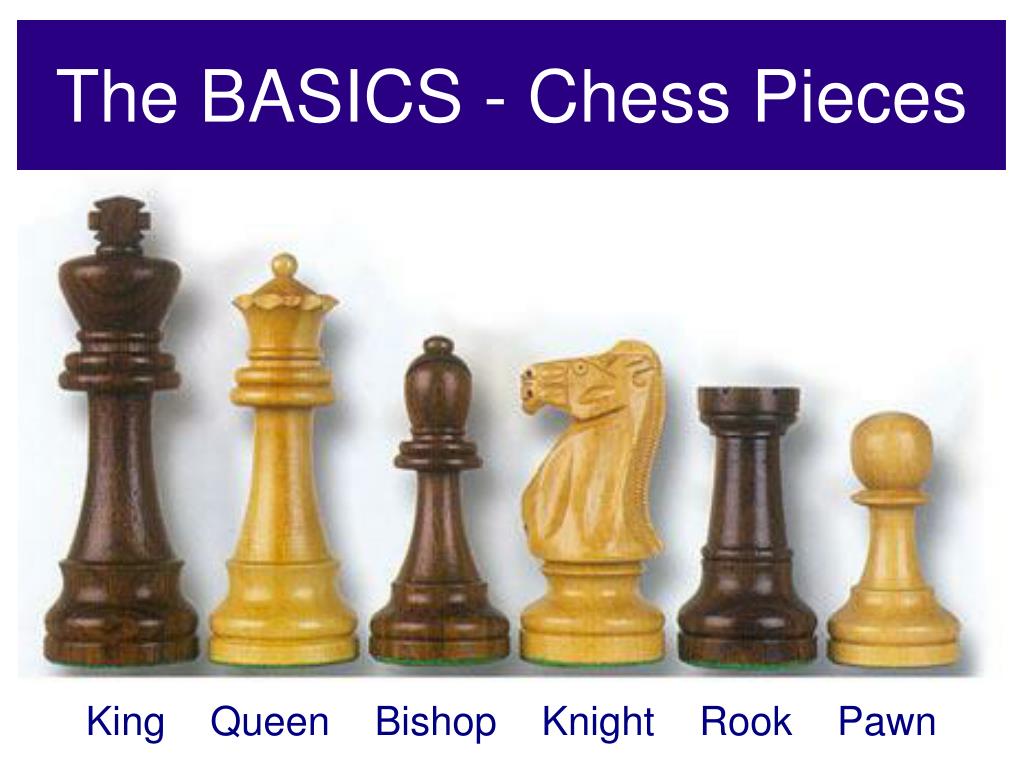
PPT CHESS PowerPoint Presentation, free download ID4748943
Point Value Of The Chess Pieces As a game progresses and pieces are traded or lost, it is not at all unusual for the armies to be left with different types of men. For example, White have two rooks, one bishop and six pawns whereas Black may have two rooks, one bishop, one knight and three pawns. Who is ahead? White: Black:

The Basic Movements of Chess Pieces YouTube
In chess, the chess piece relative value system conventionally assigns a point value to each piece when assessing its relative strength in potential exchanges. These values are used as a base that helps determine how valuable a piece is strategically. Calculations of the value of pieces provide only a rough idea of the state of play.